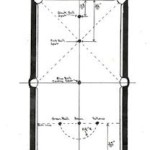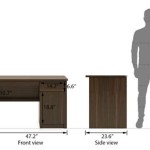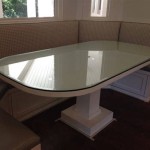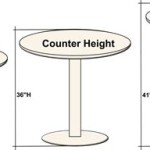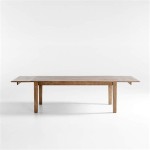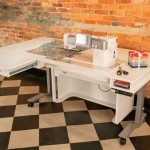Beveled Glass Table Tops: Up or Down?
Beveled glass table tops, characterized by their angled edges, add a touch of elegance and sophistication to any table. But when incorporating beveled glass into a table design, a crucial consideration arises: should the bevel face up or down? This decision, often overlooked, impacts both the aesthetic appeal and functional aspects of the table. Choosing the right direction for the bevel requires understanding its implications on light reflection, durability, and cleaning ease.
Aesthetic Impact: Upward Bevel for Brilliance
Beveled glass, when placed with the bevel facing upwards, creates a captivating play of light. The angled edges reflect light, causing the table top to sparkle and shimmer. This effect is particularly pronounced when sunlight or a source of artificial light shines directly on the surface. An upward-facing bevel enhances the overall luminosity of the table, adding a touch of vibrancy to the surrounding space. This aesthetic choice is particularly well-suited for dining tables, coffee tables, and console tables, where the table top is prominently displayed.
However, the upward bevel can also be less forgiving when it comes to fingerprints and smudges. The reflective nature of the bevel accentuates any imperfections on the glass surface, making it essential to maintain meticulous cleanliness. This can be a drawback for households with young children or frequent use.
Durability and Functionality: Downward Bevel for Protection
A downward-facing bevel, where the angled edge faces towards the underside of the table, prioritizes durability and functionality. The bevel serves as a protective barrier, shielding the sharp edges of the glass from potential damage. This is particularly beneficial for tables that are frequently used or exposed to high traffic. Furthermore, the downward bevel minimizes the risk of accidental cuts or scrapes, especially in households with young children or pets.
From a cleaning perspective, a downward bevel offers an advantage. Dust and debris tend to collect along the edges of the table top. With a downward bevel, the angled edges direct dust and debris downwards, minimizing the accumulation of dirt on the visible surface. This makes cleaning easier and less frequent.
Choosing the Right Direction: A Matter of Balance
Ultimately, the choice between an upward or downward bevel for a glass table top hinges on a balance of aesthetics, durability, and functionality. If the table is primarily intended for display and the desired aesthetic is one of brilliance and visual impact, an upward bevel is an excellent option. However, if the table's intended use prioritizes durability, functionality, and ease of cleaning, a downward bevel is a more suitable choice. Consulting with a qualified glass artisan or furniture designer can provide valuable guidance in making this crucial decision.
For certain applications, a combination of upward and downward bevels can prove advantageous. For example, a table top with an upward bevel on the perimeter and a downward bevel on the inner edges offers a balance of aesthetic appeal and durability. This approach allows for a captivating play of light while still providing protection against potential damage to the edges.

Glass Table Tops A Complete Guide

A Guide To Glass Table Tops Surface Protectors Abc Processing

Custom Glass Tabletop Beveled Flat Polished Seamed Edge

Transform A Room With Glass Table Tops Everything You Need To Know Abc Mirror

Side Table 162 Casio Gold

Side Table 162 Casio Chrome

Fab Glass And Mirror 20 In Clear Round Table Top 1 2 Thickness Tempered Beveled Edge Polished 20rt12thbean The Home Depot

Side Table 162 Casio Chrome

Dulles Glass Tempered Square Table Top 10 Inch 1 2 Thick Beveled With Eased Corners Com

Dulles Glass Tempered Square Table Top 10 Inch 1 2 Thick Beveled With Eased Corners Com

